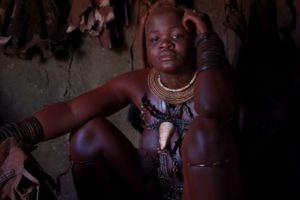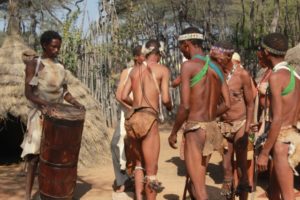Generalizing a group of people can be a slippery slope, especially when they are from a culture very different from your own. Students of Texas A&M and Prairie View A&M, including myself, have traveled across the globe to be immersed in Namibian culture. We are exploring this country for a month to better understand how it originated and where it is headed. As we say at TAMU, “from the outside looking in you can’t understand it,” Namibia has proven it is a place you have to see to comprehend.
While in Swakopmund, we met some Peace Corps volunteers who offered advice, as well as stories from their journeys in Namibia. One volunteer, Jennifer, shared a story of a Damara wedding. Jennifer explained how far guests travel to be with extended family of the bride, who is Damara. We learned of the struggle the newlywed couple had to remain traditional ways, although the groom was German. They had married beforehand in his hometown, but returned to Namibia for a Damara wedding. This included the groom requesting his wife for a week until her family finally allowed the ceremony to commence. We expected to learn of a large wedding, but were surprised when she said seven couples were married at the same time. Jennifer said the women wore what is expected at a western wedding, but the rest of the event was traditional Damara. This helped us be more in touch with what we saw in Twyfelfontein, the “doubtful fountain,” where many prehistoric carvings told stories of Damara people.
The Damara introduced us to the concept of a living museum, which is what I think of as a formal western idea used to sustain the history of a culture. Their living museum reminded me of the George Ranch in Texas, which demonstrates more than 100 years of Texas history. While at the museum, we learned phrases in the Damara language and experienced exhibits presenting the skills necessary to sustain the Damara lifestyle. Demonstrations included organic fire starting and traditional song and dance. The ladies in our group were marked with clay on their cheeks, used as makeup to represent the beauty in the Damara culture. We also watched a type of gambling that a chief of the tribe would play involving very high stakes, such as his wife.

A Himba woman demonstrates while a tour guide explains her traditional dress and clay used to protect her skin. She wears jewelry for decoration as well as representing her marital status and number of children.
Days later, we visited a Himba village where we experienced their culture through song, dance, and tales of their traditions. In the Himba village, we were welcomed into a typical family hut. A woman presented her traditional dress, shared a sample of the clay she used as skin protection, and coal she used as perfume. Our tour guide, Gerson, explained the tradition of knocking out their front teeth to speak their native language, Ovahimba. At the age of 13, Gerson requested to keep his teeth in order to speak English and to continue his education. The women did not have this choice and become wives to men in the village.

The San people taught us about their culture through song and dance. The men danced with cuffs of bottle caps on their calves. The women clapped along and sang a traditional song.
Educating others about Himba culture is handled with great professionalism because no one can explain it like they can. It is very important to accurately translate the messages of Himba culture from their native tongue into English. A tour guide is educated and responsible for conveying an image very effectively to guests such as us. Our journey has earned us a few stamps in our passports, along with lot of photos on our cameras. We still have a week of destinations ahead and much more to learn. By the end of this Namibia study abroad we will officially be able to say “from the inside looking out, you can’t explain it.”